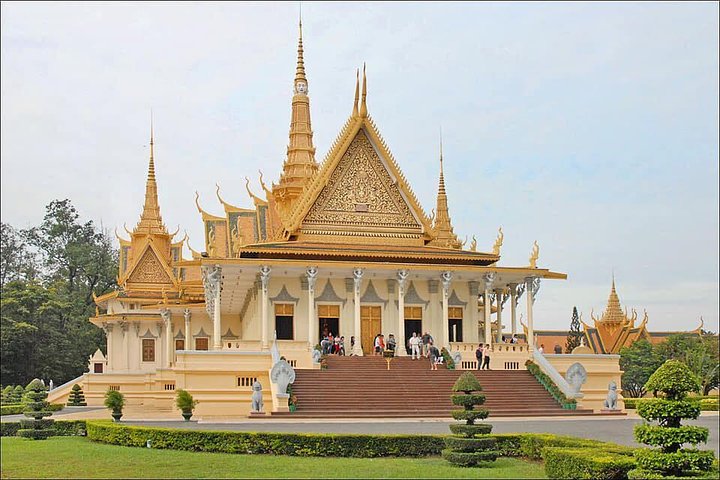Exploring Cambodia’s Hidden Gems: A Day at Phnom Prasith and Reap Temples
Eager to escape the hustle of Phnom Penh, I set out to explore the Phnom Prasith and Reap Temples. This journey promised not only breathtaking views but also a deep dive into Cambodia’s cultural heritage. Here’s how it unfolded.
A Journey Beyond Phnom Penh
Leaving the bustling streets of Phnom Penh behind, I embarked on a journey to the Phnom Prasith and Reap Temples, a trip that promised breathtaking vistas and a glimpse into Cambodia’s rich cultural tapestry. The 90-minute ride was a refreshing escape from the city, offering views of serene natural lakes, lush rice fields, and traditional houses. Opting for a tuk-tuk, I felt the cool breeze against my face as we zipped through the countryside, a local snack in hand, savoring the flavors of Cambodia.
Our guide, Li, was a gem. Knowledgeable yet never overwhelming, he shared stories of the land and its people, painting a vivid picture of Cambodia’s history. The highlight of the journey was undoubtedly the tuk-tuk ride through a bustling market. The vibrant colors, the cacophony of sounds, and the tantalizing aromas were a feast for the senses. It was a slice of local life that I cherished, a reminder of why I left the corporate world behind to explore the world on my own terms.
Temples and Tranquility
Arriving at Phnom Prasith Temple, perched atop the eastern summit of twin hills, I was greeted by panoramic views of the surrounding countryside. The temple, with its rich architecture and intricate sculptures, was a testament to Cambodia’s artistic heritage. As I wandered through the grounds, I encountered a community of monks going about their daily lives, their serene presence adding to the temple’s tranquility.
A surprise awaited me when the head monk approached, asking for a photo. It was a delightful moment, as he proudly showed me selfies with other tourists, a testament to the temple’s off-the-beaten-path charm. The absence of other tourists made the experience even more special, allowing me to soak in the peaceful ambiance without distraction.
The journey continued to Phnom Reap Temple, also known as Prasat Vihear Suor. Though a relatively new structure, completed in 1998, its design echoed the grandeur of Angkor Wat. The temple was adorned with beautiful sculptures of ancient kings and Buddha, and I watched as locals made offerings, seeking blessings and good fortune.
A Glimpse into Cambodia’s Past
While many of the temples were built in the last two decades, a poignant reminder of the destruction wrought by Pol Pot, there was one that stood as a testament to Cambodia’s enduring spirit. A 700-year-old temple, its ancient stones whispered stories of the past. A hermit, who had arrived just days earlier for a pilgrimage, added a layer of mystique to the site.
As I sat in the shade of a traditional Khmer restaurant, enjoying a delicious lunch and the views of the rural landscape, I reflected on the day’s journey. It was a reminder of the resilience of the Cambodian people and the beauty that can be found in unexpected places. For those seeking an authentic experience away from the tourist crowds, the Phnom Prasith and Reap Temples offer a journey into the heart of Cambodia’s cultural heritage.
This adventure was a testament to the joys of solo travel, the freedom to explore at my own pace, and the connections made along the way. Whether you’re a seasoned backpacker or a first-time traveler, I highly recommend this temple adventure for a unique and enriching experience.






































